- Africa - Tanzania
- tanzaniasafariradar@gmail.com
This is SerengetiMara eco-system, an annually event with different seasonal animal migration movement of around 2,000 kilometers mainly involving wildebeest, zebras, gazelles, elands, and impalas. It is a remarkable natural phenomenon that spans across the Serengeti ecosystem, encompassing Tanzania and Kenya. The migration is driven by the pursuit of greener pastures as the herds travel in search of fresh grazing lands and water sources. Each year, over a million wildebeests, accompanied by hundreds of thousands of other herbivores, embark on this arduous journey, navigating vast distances and challenging landscapes. The Serengeti wildebeest migration safari provides an awe-inspiring spectacle for nature enthusiasts and wildlife lovers, as they witness the breathtaking sight of countless animals on the move, crossing rivers, braving predators, and showcasing the true essence of survival in the wild. It is an unforgettable experience that showcases the grandeur and resilience of nature's cycles.
Tanzania Safari Radar we used our Safari Radar effectivelly to bring you everything you need to know by starting with tracing the whole cycle of migration safari in Serengeti. We observed that the Great Serengeti Migration safari is a year-round natural spectacle, involving over 1.5 million wildebeest and hundreds of thousands of zebras and gazelles. Their constant search for fresh grazing and water drives their movement across the Serengeti ecosystem (Tanzania) and into the Maasai Mara (Kenya). Here's a breakdown of what happens, where, and when:
From December to March, the wildebeest migration gathers in the Ndutu Plains of Southern Serengeti and parts of the Ngorongoro Conservation Area. This is calving season, with around 500,000 wildebeest calves born in a dramatic 2-3 week period in February. It’s an incredible time to witness newborn wildlife and intense predator action from lions and cheetahs. With lush green scenery and fewer crowds, it's also a prime season for peaceful game drives and stunning photography. Tanzania Safari Radar with a well-organized team in sales, operations, and guiding is fully prepared to handle your safari during this 2025-2026 calving season in December, January, February, and March, with departures from Arusha and fly-in/fly-out access to Ndutu. Book with us now!
From April to May, the Serengeti enters its lush green season as the herds begin moving northwest from Ndutu toward the Western Corridor. This period is marked by fewer crowds, excellent birdwatching, and lower safari and accommodation rates. While the migration is in motion, the Central Serengeti remains a hotspot for resident wildlife, offering rewarding game drives even during the rains. Tanzania Safari Radar with a well-organized team in sales, operations, and guiding—is fully prepared to handle your safari tour during the 2025-2026 green season in April and May with road departures from Arusha and fly-in/fly-out access to central Serengeti(Seronera). Book with us now!
From June to July, the Great Migration reaches the Western Serengeti, where massive herds gather around the Grumeti River preparing for dramatic river crossings, often while evading hungry crocodiles. This marks the beginning of the dry season, making it an excellent time for clear skies, great visibility, and thrilling wildlife moments. The Grumeti region offers some of the most unique and less crowded river-crossing experiences. Tanzania Safari Radar with a well-organized team in sales, operations, and guiding—is fully prepared to handle your safari tour during the 2025-2026 dry season in june to july with road departures from Arusha and fly-in/fly-out access to central or Kogatende in Serengeti. Book with us now!
From July to September, the Great Migration reaches its most dramatic phase at the Mara River in Northern Serengeti heading to the Maasai Mara in Kenya. Here, wildebeest and zebras brave the crocodile-infested waters in spectacular, heart-pounding crossings often with predators lurking nearby. This period offers unmatched opportunities to witness raw wildlife drama and big cat action. Tanzania Safari Radar we offer to you the best crafted Serengeti Migration Safari tours during this peak season of 2025 - 2026 in months of july, August, and September, with early booking options, road-drive departures from Arusha an Moshi or fly-in safaris to Kogatende, and prime accommodation choices to ensure you don’t miss the wildlife show of a lifetime. Book with us now!
As the short rains approach, the herds begin their journey from Kenya’s southern Maasai Mara back into the Northern Serengeti, gradually heading toward the central plains. While the crossings become less frequent, this transition still offers exceptional wildlife viewing with fewer crowds. It’s an ideal time for those seeking a balance between good animal sightings and better lodge availability. Tanzania Safari Radar we offer to you the best crafted Maasai Mara Migration Safari tours in Kenya during this peak season of 2025 - 2026 in months of October and November, with early booking options, road-drive departures from Nairobi, Amboseli, Nakuru and Naivasha in Kenya with prime accommodation choices to ensure you don’t miss the wildlife show of a lifetime. Book with us now!
The Great Migration’s route which covers an incredible 1,800 miles (nearly 3,000 kilometers) across some of Africa’s richest ecosystems. In Tanzania, the migration touches several prime wildlife viewing zones. Let’s Explore the Serengeti’s Migration Corridors with Tanzania Safari Radar your best local tour operator on migration safari routes.
Ideal for calving safaris between late December and March.
A wildlife-rich area offering year-round game viewing, especially during the early stages of the migration.
Famous for the dramatic Grumeti river crossings between May and June when wildebeest battle river currents and crocodiles.
Between July and October, this is where the most intense and dramatic action happens with epic Mara River crossings.
With Tanzania Safari Radar, witness the Serengeti Great Migration safari 2025 -2026 in unmatched style from luxury mobile camps that travel with the herds to exquisite lodges perched along prime migration routes. Our expert knowledge of the Serengeti Great Migration safari ensures you're always in the heart of the action, capturing unforgettable wildlife encounters at exactly the right moment. Chase the Serengeti Great Migration without sacrificing comfort with the best tour operator Tanzania Safari Radar.
The Great Wildebeest Migration is one of nature’s most amazing-inspiring spectacles and a
bucket-list experience for safari lovers worldwide. The Great Wildebeest Migration is often
called "The Greatest Show on Earth" and for good reason. Each year, over two million
wildebeest, along with hundreds of thousands of zebras and gazelle, journey across the
Serengeti and Maasai Mara in search of fresh grazing, along the way they brave crocodile-
infested river crossings and outwit prowling predators, It’s a raw, powerful display of nature in
motion, unpredictable, untamed and unforgettable.
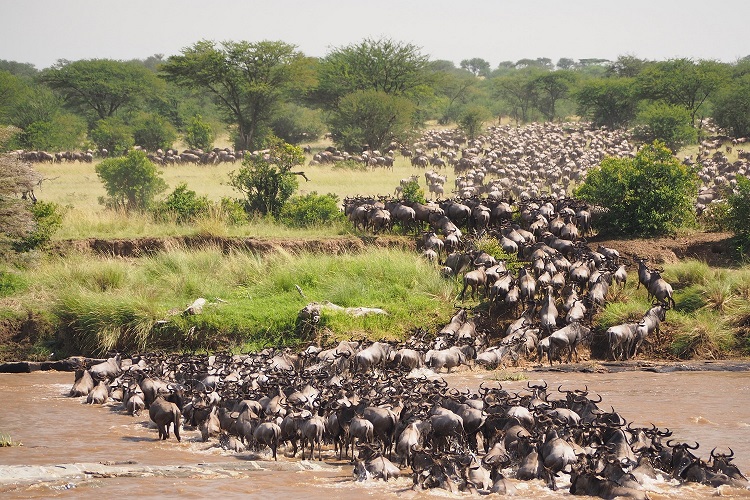 This epic migration which involves
dramatic river crossings, intense predator-prey interactions and breathtaking landscapes that
change with the seasons. It’s not just a wildlife event it’s a dynamic, ever-moving story of
survival and instinct. With Tanzania Safari Radar witness the migration that puts you in the
heart of Tanzania untamed wilderness, making it a must-see for photographers, adventurers,
curious travelers and anyone seeking a truly unforgettable Tanzania safari.
This epic migration which involves
dramatic river crossings, intense predator-prey interactions and breathtaking landscapes that
change with the seasons. It’s not just a wildlife event it’s a dynamic, ever-moving story of
survival and instinct. With Tanzania Safari Radar witness the migration that puts you in the
heart of Tanzania untamed wilderness, making it a must-see for photographers, adventurers,
curious travelers and anyone seeking a truly unforgettable Tanzania safari.
The Serengeti Great Migration safaris involve two main activities that offer tours to you as a visitor for exploring and experiencing this monopoly world event. The top-best safari tour activities for the Great Migration experience are; game drives and hot air balloon safaris, these activities are designed by Tanzania Safari Radar for a full immerse travelers in this spectacular journey of over a million wildebeest and zebras. Each type of tour activity offers a unique perspective on this awe-inspiring migration across the Serengeti plains.
Tanzania Safari Radar, we are offering the top and best safari activities in Serengeti for Great Migration safari tours including game drives and hot air balloon safaris specifically crafted for the 2025-2026 season.
List of the Top-2 Safari Activities for Great Migration Safari Experience in 2025 - 2026Game drive is the most essential and highly recommended activity for experiencing the Serengeti Great Migration. As the primary
way to spot wildlife, it place you at the heart of Great Migration event whether it's tracking the massive herds, witnessing dramatic predator
scenes, or following river crossings. At Tanzania Safari Radar, we offer expertly guided game drives using well-maintained 4x4 safari
jeeps with pop-up roofs for optimal viewing and photography.
 Our Serengeti Great Migration safari tours depart from Arusha, Moshi, or Mwanza, with fly-in options
from Zanzibar and Arusha also available. Every tour is led by a professional safari driver-guide,
and we prioritize your safety and comfort with fully equipped vehicles and personalized service throughout your Serengeti holiday.
Our Serengeti Great Migration safari tours depart from Arusha, Moshi, or Mwanza, with fly-in options
from Zanzibar and Arusha also available. Every tour is led by a professional safari driver-guide,
and we prioritize your safety and comfort with fully equipped vehicles and personalized service throughout your Serengeti holiday.
Our Serengeti hot air balloon safari offers one of the most unforgettable and unique ways to witness the Great Migration.
This activity offer to you a chance of floating
silently above the vast plains at sunrise,to gain a bird’s eye view of Great migration adventure and the breathtaking
landscapes below. This activity is especially rewarding during calving season in Ndutu or river crossing months in the Northern and
Western Serengeti.
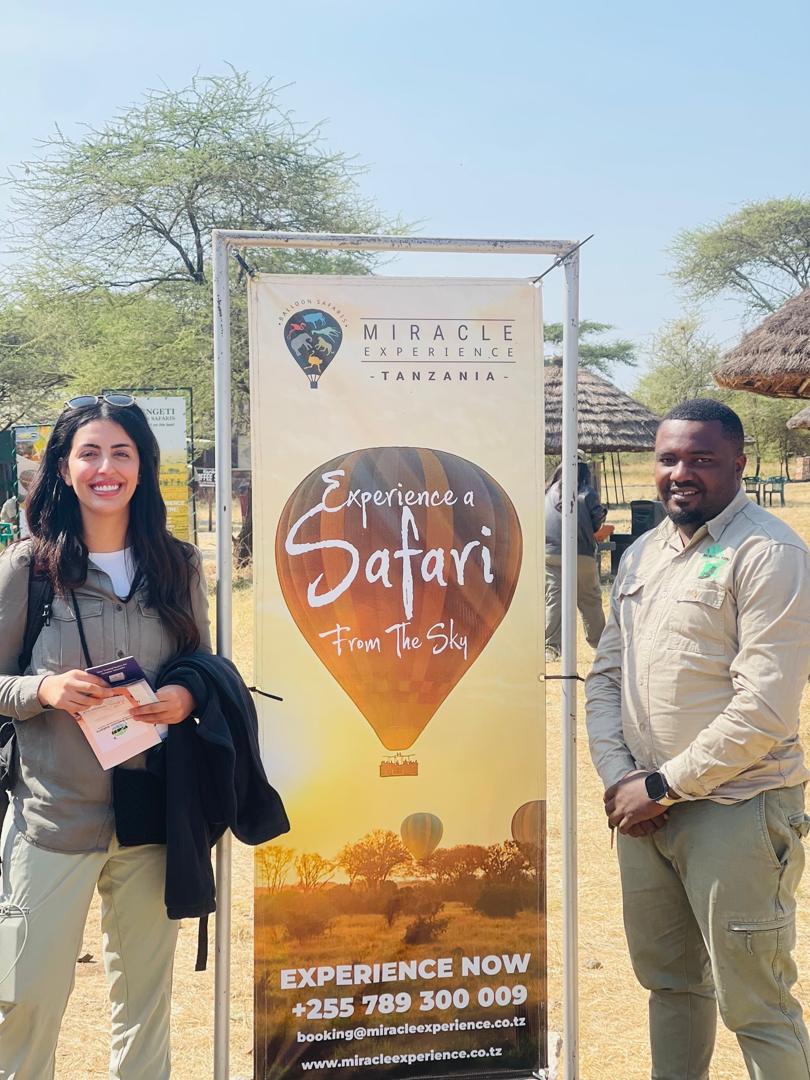 alt="Hot Air Balloon in Serengeti" title="Hot Air Balloon Great Migration Safari in 2025/2026">
At Tanzania Safari Radar, we organize fully licensed balloon safaris with expert pilots, followed by a bush-style
champagne breakfast to celebrate the flight. Whether you’re flying in from Arusha, Moshi, or Zanzibar,
we ensure a seamless experience that blends luxury, adventure, and awe all in one thrilling morning over the Serengeti.
alt="Hot Air Balloon in Serengeti" title="Hot Air Balloon Great Migration Safari in 2025/2026">
At Tanzania Safari Radar, we organize fully licensed balloon safaris with expert pilots, followed by a bush-style
champagne breakfast to celebrate the flight. Whether you’re flying in from Arusha, Moshi, or Zanzibar,
we ensure a seamless experience that blends luxury, adventure, and awe all in one thrilling morning over the Serengeti.
Book with Tanzania Safari Radar Now!
WhatsApp E-mailTanzania Safari Radar offers both group and private Great Migration safari tours with flexible departures to Serengeti from all major locations across the country, including Arusha, Moshi, Mwanza, Karatu, Dar es Salaam, Morogoro, Dodoma, and Zanzibar. Our Great Migration safari itineraries are well-crafted to ensure you enjoy authentic African Serengeti-Mara Migration event in this season of 2025 -2026.
At Tanzania Safari Radar, we offer the best Serengeti Great Migration group safari experiences ranges from any number with maximum 7 people per safari Jeep
(Land-Cruiser 4x4) designed exclusively within Serengeti
National Park.
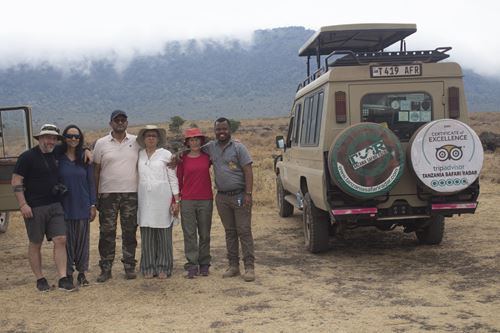 For the 2025 - 2026 season, our well-organized group safari departures to Serengeti for Great Migration event are ideal
for a group of students, friends, and corporate teams looking to witness the dramatic movements of the Wildbeest. Enjoy cost-effective travel,
shared experiences, and expert-guided tours that immerse your group in one of the world’s most spectacular wildlife events.
For the 2025 - 2026 season, our well-organized group safari departures to Serengeti for Great Migration event are ideal
for a group of students, friends, and corporate teams looking to witness the dramatic movements of the Wildbeest. Enjoy cost-effective travel,
shared experiences, and expert-guided tours that immerse your group in one of the world’s most spectacular wildlife events.
Tanzania Safari Radar invites you to explore the Serengeti Great Migration through our private safari tours, offering exclusive and
personalized experiences for solo travelers, couples, families, and VIP guests. In the 2025 - 2026 season, our private safaris are crafted
around your schedule and preferences - with expert guides, comfort accommodations, and custom game drives to follow the migration closely.
 We offer the best private Great Migration safari tours to Serengeti with departures starting from Arusha, Moshi, Mwanza, and Zanzibar in
this season 2025 - 2026.
We offer the best private Great Migration safari tours to Serengeti with departures starting from Arusha, Moshi, Mwanza, and Zanzibar in
this season 2025 - 2026.
Tanzania Safari Radar offers unforgettable Serengeti Great Migration safari tours designed special for families traveling with children.
Our family safaris to Great Migration tour prioritize safety then comfort and fun featuring child-friendly lodges with family rooms, flexible game drive schedules,
and expert guides who are great with kids.
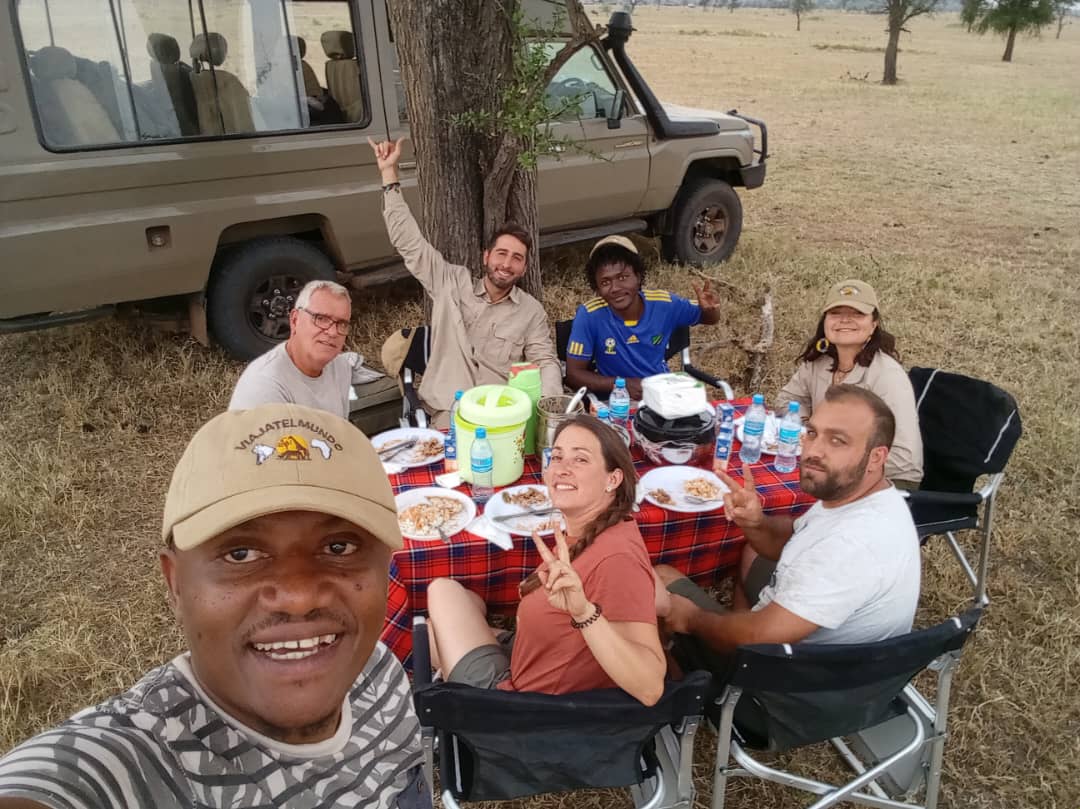 From witnessing baby wildebeest during calving season to thrilling
wildlife sightings along the migration route, every moment is tailored to make your family safari both educational and exciting.
From witnessing baby wildebeest during calving season to thrilling
wildlife sightings along the migration route, every moment is tailored to make your family safari both educational and exciting.
During this season of 2025 -2026, Tanzania Safari Radar we offer the best Great Migration adventure for the family(kids-friendly) tour packages ranging from 1 to 8 days, we offer a family safari tour to Great Migrations experience with flexible departures starting from Arusha, Moshi, Mwanza, and Zanzibar. Book your family safari tour to Serengeti Migration expoler with Tanzania Safari Radar today for your nex holiday! Contact Us
We offer the best designed Great Migration safari adventure specifically for honeymooners or partners celebrating a special occasion such like universary,
these tours combine the breathtaking drama of the Great Migration with intimate, luxury accommodations, candle-lit bush dinners, and private game drives.
 Tanzania Safari Radar invites couples to experience the magic of the Serengeti with our special curated romantic safari packages.
Whether you choose a fly-in safari from Zanzibar
or departures with a scenic drive from Arusha or Moshi, our expert team ensures a seamless, unforgettable escape into the wild just for two.
Tanzania Safari Radar invites couples to experience the magic of the Serengeti with our special curated romantic safari packages.
Whether you choose a fly-in safari from Zanzibar
or departures with a scenic drive from Arusha or Moshi, our expert team ensures a seamless, unforgettable escape into the wild just for two.
Book with Tanzania Safari Radar Now!
WhatsApp E-mailTanzania Safari Radar proudly offers the best Serengeti Great Migration safari tour packages for 2025 and 2026. Our expertly crafted itineraries range from 1-day adventures to 7-day or longer immersive experiences, it give you a front-row seat to one of nature’s most spectacular events. Our Great Migration safari tour packages are well-crafted with dayly departure starting from Arusha, Moshi, Mwanza, Zanzibar, and even Nairobi, our scheduled departures are designed for flexibility, comfort, and unforgettable wildlife encounters in the Serengeti. Lets take a look of some reputable safari tour packages to Great Migration safari experience best for your trip in this 2025 - 2026.
Experience the Serengeti Great Migration up close with our private safari tours departing from Mwanza, perfect for travelers with limited time but a deep desire to witness Africa’s most iconic wildlife spectacle. Our departures start with a drive from Mwanza to the western Serengeti via Ndabaka Gate that takes approximately 2 to 3 hours (about 145 km), making it the most convenient entry point for quick access to the park. The Great Migration safari tours from Mwanza are best enjoyed between May and July, when the Great Migration herds move through the Western Corridor, including the Grumeti River crossing. Expect thrilling game drives through rich wildlife zones, with chances to see wildebeest, zebra, big cats, and more-guided by our expert local guides. Due to short distance from Mwanza to reach the Serengeti park then departures from Mwanza are the best shortest itineraries from 1 to 3 days enough to experience the Great Migration adventure. These private safari tour packages offer flexibility, comfort, and a truly immersive experience tailored to your pace and interests.
Best Serengeti Great Migration Safari Tours from Mwanza in 2025 - 2026
1-Day Safari 2-Day Safari 3-Day SafariAt Tanzania Safari Radar, we offer the Serengeti Great Migration experience specifically designed for honeymooners and couples safari tours ranging from 4 to 6 days, starting from Arusha, Moshi, Mwanza, or Zanzibar. These romantic safaris are crafted to blend Great Migration game drives during your holiday in Tanzania with moments of privacy, relaxation, and romance. From witnessing either dramatic River crossings, culving season or green season, expect to enjoy serene evenings in luxury camps with candle-lit bush dinners, every detail is tailored for two. Whether you’re celebrating a honeymoon, anniversary, or just love itself, expect comfort, elegance, and unforgettable memories amidst Africa’s most iconic wildlife event.
Best Serengeti Great Migration - Romantic Safari Tours in 2025 - 2026
4-Day Safari 5-Day Safari 6-Day Safari
Tanzania Safari Radar offers specially tailored family-friendly Serengeti Great Migration safaris ranging from 4 to 6 days. Our safari tour packages to Great Migration in Serengeti start from Arusha, Moshi, Mwanza, or Zanzibar that are designed to suit all ages blending exciting wildlife moments with safety, comfort, and educational fun for kids. In this expect private game drives, flexible schedules, and lodges or camps that cater to families. Witness the dramatic migration scenes together while creating lifelong memories in a setting that's both thrilling and enriching for the entire family.
Best Great Migration - Family Safari Tours in 2025 - 2026
4-Day Safari 5-Day Safari 6-Day SafariOur photography safari packages are crafted for both amateur and professional photographers looking to capture the Serengeti Great Migration in stunning detail. Tanzania Safari Radar offers 4 to 8-day customized tours with special attention to timing, lighting, and positionin-ensuring the best photographic opportunities during peak migration events. Starting from Arusha, Moshi, Mwanza, or Zanzibar, these safaris include expert guiding, private vehicles, and the flexibility needed to track dramatic scenes such as river crossings, predator hunts, and vast migrating herds across different Serengeti zones.
Best Great Migration - Family Safari Tours in 2025 - 2026
4-Day Safari 5-Day Safari 6-Day Safari 7-Day Safari 8-Day Safari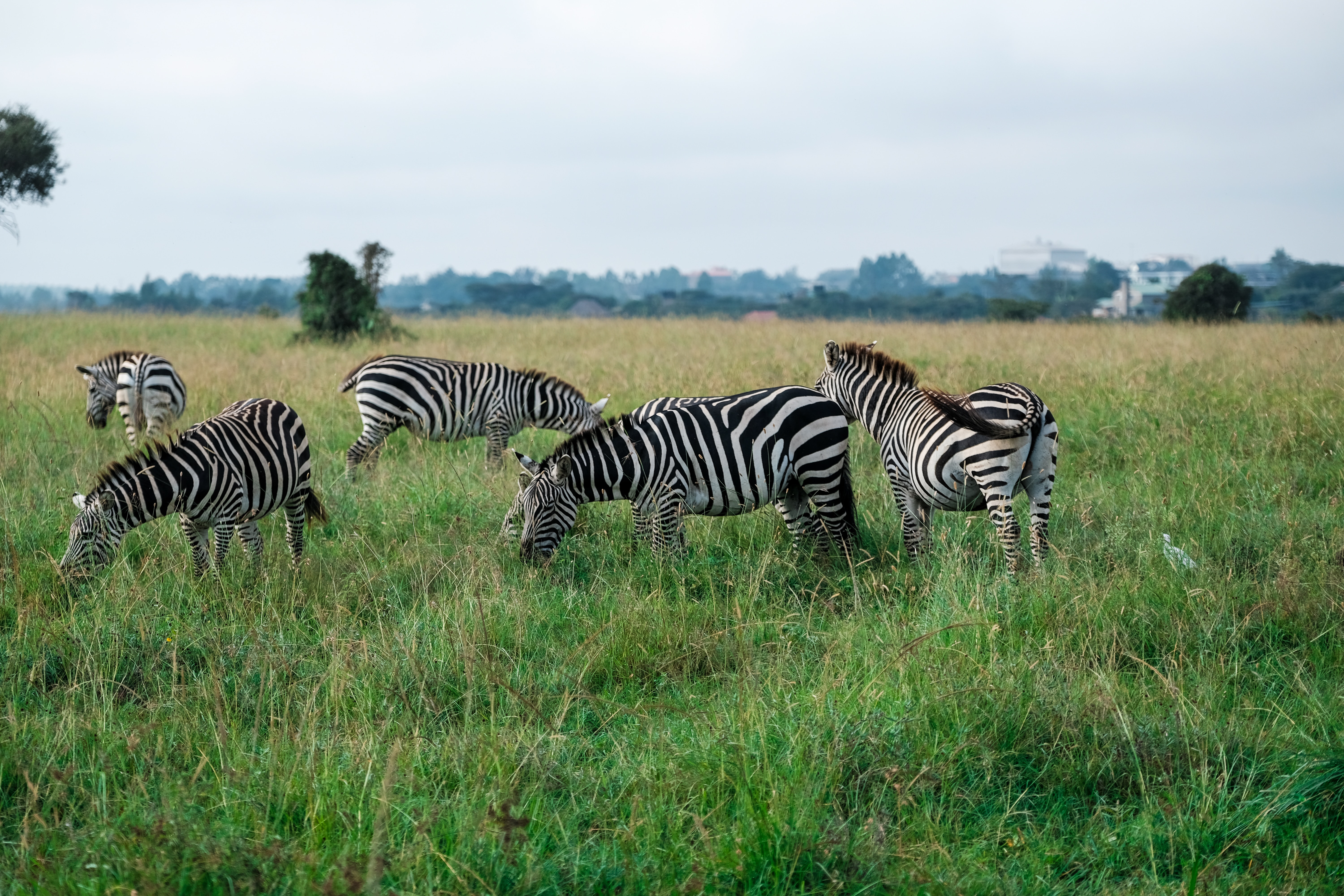
Join fellow adventurers on a 4 to 6-day Serengeti Great Migration group safari with Tanzania Safari Radar. Perfect for solo travelers, friends, or budget-conscious explorers, these shared safari packages offer an affordable way to experience the drama of the migration. Departing from Arusha, Moshi, or Mwanza, you'll enjoy expertly guided game drives, comfortable group accommodations, and the chance to meet new people while exploring one of nature’s greatest spectacles.
Best Great Migration - Family Safari Tours in 2025 - 2026
4-Day Safari 5-Day Safari 6-Day SafariBook with Tanzania Safari Radar Now!
WhatsApp E-mailTanzania Safari Radar, in this 2025 -2026 we offer the best Great Migration safari tours with well-organized road departures during the high season in the months of June, July, August, and September, road departures starting from Arusha, Moshi, Mwanza and Karatu to the Western and Northern Serengeti for great Migration safari adventure.
We offer the best, faster and more direct access safari departures, our fly-in safari departures from Zanziabar and Arusha and land at Kogatende airstrip, placing you right near the Mara River-home to dramatic river crossings and predator action. With our expert planning and top-rated packages, Tanzania Safari Radar ensures your next holiday during the 2025 - 2026 season is unforgettable.
Summary: Safari Departure to Serengeti Great Migration in June - Sep. 2025 - 2026| Start Point | |
|
| Arusha | 325 km | 7 - 8hrs |
| Moshi | 420 km | 9 - 10 hrs |
| Mwanza | 140 km | 2.5 - 3 hrs |
| Karatu | 160 km | 4 - 5 hrs |
| Zanzibar | Fly-In | 1,5 hrs |
Experience the iconic Great Migration with our well-planned safari departures from Arusha to Serengeti during the peak migration season of June, July, August and September. Tanzania Safari Radar we offer both drive-in(7-8hrs) and fly-in(2hrs) options to the Western and Northern Serengeti in the locations of witnessing the river crossings and massive wildlife movements. Whether you're traveling solo, with a group, or as a couple, our 2025 - 2026 Serengeti Great Migration safari packages from Arusha guarantee expert-guided tours, comfortable travel, and unforgettable migration encounters.
 1. Summary: Arusha Safari Departure to Serengeti Great Migration in 2025 - 2026
1. Summary: Arusha Safari Departure to Serengeti Great Migration in 2025 - 2026
Book your best Great Migration tour from Moshi to Serengeti with Tanzania Safari Radar, we offer the peak Serengeti Great Migration season from June to September. Our itineraries offer drive-in and fly-in options to Western and Northern Serengeti, where you can witness dramatic river crossings wildlife adventure. This is an ideal for Kilimanjaro climbers seeking a safari extension after summiting at Uhuru Peak, our 2025 - 2026 tours ensure expert guidance, scenic routes, and quality accommodations.
 1. Summary: Moshi Safari Departure to Serengeti Great Migration in 2025 - 2026
1. Summary: Moshi Safari Departure to Serengeti Great Migration in 2025 - 2026
Tanznaia Safari Radar we offer the best Serengeti safari departures from Mwanza city, Our Mwanza safari departures offer the shortest and most scenic routes approx 2.5 to 3 hrs into the Serengeti park via Ndabaka gate to experience the Great Migration event during the months of June, July, August and September known as the high season. Tanzania Safari Radar we provide an exclusive private safaris from Mwanza, making it perfect for shorter 1-3 day Great Migration tours. From the lead of our expert driver-guide you will enjoy a game drive near the Grumeti River and avoid long travel times while still experiencing a front-row seat to nature’s grandest event.
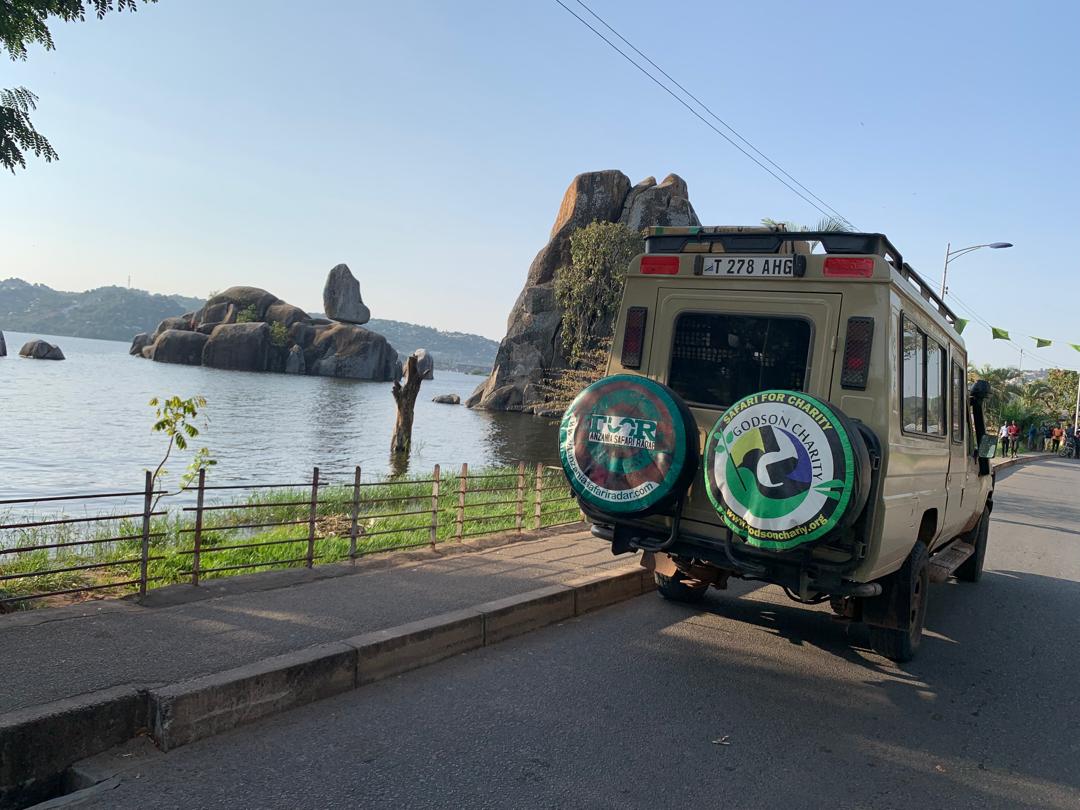 1. Summary: Mwanza Safari Departure to Serengeti Great Migration in 2025 - 2026
1. Summary: Mwanza Safari Departure to Serengeti Great Migration in 2025 - 2026
The quick safari departures from tropical beaches to the heart of the Serengeti Great Migration safari, Tanzania Safari Radar offer you the best Great Migration experience direct from Zanzibar to north Serengeti via seamless fly-in safari landing at Kogatende or Grumeti airstrips during the months of June to September. This is mostly Ideal for honeymooners or those combining beach and bush in a luxurious 2025 - 2026 safari.
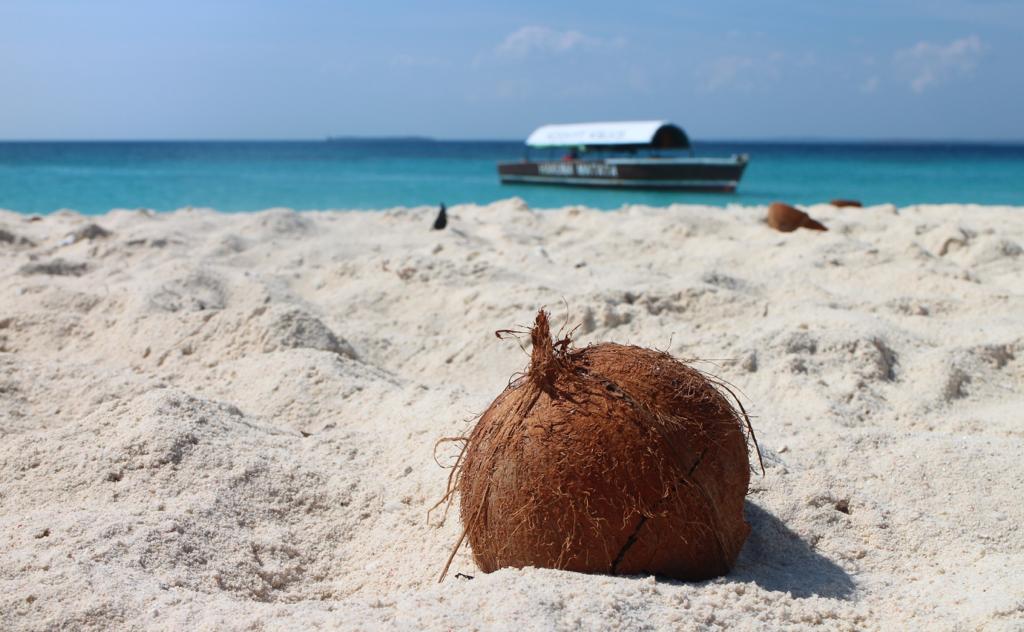 Summary: Zanzibar Safari Departure to Serengeti Great Migration in 2025 - 2026
Summary: Zanzibar Safari Departure to Serengeti Great Migration in 2025 - 2026
Tanzania Safari Radar, we offer you the best and world-class Great Migration event departing from Karatu to North Serengeti during the months of June to September in 2025 - 2026. Starting from the picturesque highlands near Ngorongoro, our tours provide a drive-in only option for a seamless journey to witness river crossings and massive wildebeest herds in action. Whether you're on a family trip, honeymoon, or photography adventure, our Karatu safari departures to Serengeti are perfectly scheduled for comfort, wildlife immersion, and unforgettable migration encounters.
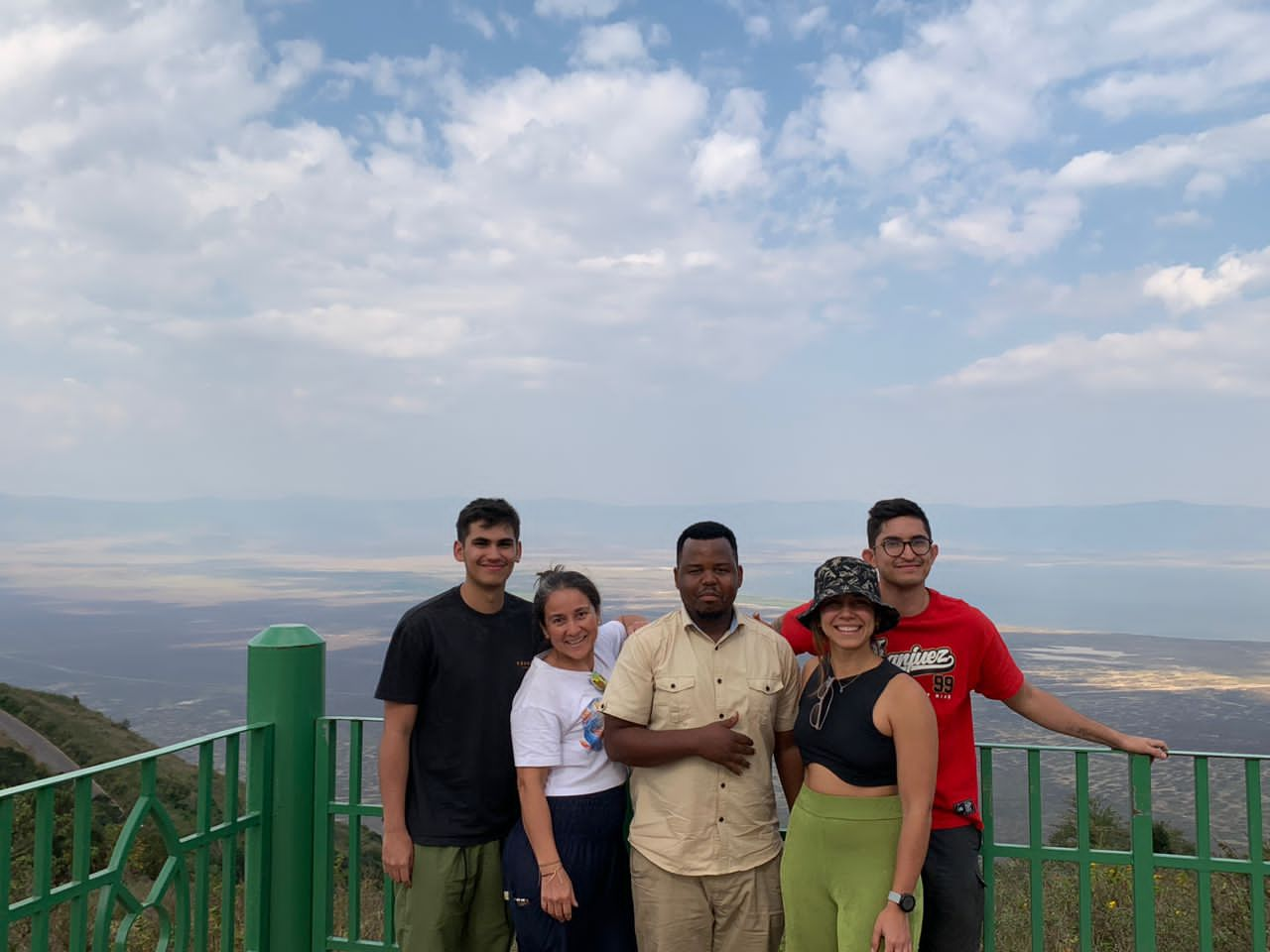 1. Summary: Karatu Safari Departure to Serengeti Great Migration in 2025 - 2026
1. Summary: Karatu Safari Departure to Serengeti Great Migration in 2025 - 2026
Book your unforgettable Great Migration safari adventure with Tanzania Safari Radar from Nairobi - Kenya, into the heart of North Serengeti during the peak migration season of June to September 2025 - 2026. We offer seamless cross-border safari packages, overland travel option from Nairobi to Kogatende Airstrip. These itineraries are perfect for travelers coming from Kenya looking to witness the dramatic Mara River crossings and the spectacle of wildebeest, zebras, and predators in action, all curated for comfort, convenience, and an exceptional wildlife experience.
 1. Summary: Nairobi Safari Departure to Serengeti Great Migration in 2025 - 2026
1. Summary: Nairobi Safari Departure to Serengeti Great Migration in 2025 - 2026
Book your best Great Migration tour from Moshi to Serengeti with Tanzania Safari Radar, we offer the peak Serengeti Great Migration season from June to September. Our itineraries offer drive-in and fly-in options to Western and Northern Serengeti, where you can witness dramatic river crossings wildlife adventure. This is an ideal for Kilimanjaro climbers seeking a safari extension after summiting at Uhuru Peak, our 2025 - 2026 tours ensure expert guidance, scenic routes, and quality accommodations.
 1. Summary: Moshi Safari Departure to Serengeti Great Migration in 2025 - 2026
1. Summary: Moshi Safari Departure to Serengeti Great Migration in 2025 - 2026
Book with Tanzania Safari Radar Now!
Choose your preferred mode of access with our fly-in or drive-in safari packages for the Great Migration. Fly-in safaris are ideal for saving time and reaching remote migration hotspots like Kogatende and Ndutu swiftly and comfortably. Our Drive-in safaris, starting from Arusha, Moshi and Mwanza offer a scenic road journey crossing different areas including Manyara and Ngorongoro area to reach the Serengeti a home of Great Migrations safari adventure to explore more of Tanzania's landscapes en route. Both options can be combined to suit your style and schedule in the 2025–2026 migration season.
The Great Migration 2025/2026 is a year-round spectacle and each season in Tanzania safari reveals a different, unforgettable chapter of epic journey. From the dramatic river crossings of the Grumeti River and Mara River during the dry months (June–October), to the lush green season (April–May), calving season in Ndutu (Late December–March), and the quieter return during the Short Rains (November–Early December), every moment offers its own rhythm and rewards. Whether you're drawn to the thundering hooves of high-season crossings or the intimate beauty of the Green Season, Tanzania Safari Radar crafts tailored Tanzania safaris that align perfectly with nature’s calendar. Follow the migration your way with expert local guidance, handpicked camps and immersive safari experiences that put you at the wild.
Ready to witness the Great Migration up close? Let Tanzania Safari Radar help you plan the perfect journey. Our dedicated team will tailor your great migration safari based on the season, your preferred travel style, and your dream experiences from calving spectacles to adrenaline- pumping river crossings. At Tanzania Safari Radar, we specialize in custom-designed Great Migration safaris that bring you face-to-face with millions of wildebeest and zebra as they journey across the Serengeti. Choose from luxurious mobile camps that move with the herds or stunning lodges perfectly positioned along the migration routes. With our expert local knowledge and real-time tracking, you’ll always be in the right place at the right time. Whether you're dreaming of iconic river crossings, predator action, or unforgettable photo opportunities, we make it happen in total comfort and style.
Explore our exclusive Serengeti Great Migration Safari Packages 2025/2026 or get in touch with our Tanzania Safari Radar team for expert advice and custom itineraries. The Great Migration is nature’s most spectacular show don’t just hear about it; live it with us. With years of experience and a deep love for Tanzania, Tanzania Safari Radar is your trusted partner in creating a Great Migration safari experience that will stay with you forever. Book your Great Migration safari now with Tanzania Safari Radar and embark on the adventure of a lifetime across the vast, untamed wilderness of Tanzania.
At Tanzania Safari Radar, we offer a range of unforgettable Tanzania safari experiences tailored to your style and interests. Whether you envision staying in a luxury mobile camp that follows the Great Migration or relaxing in a permanent safari lodge with sweeping Serengeti views, we deliver comfort and adventure in equal measure. Enjoy private 4x4 game drives led by expert guides, soar above the plains on a breathtaking hot air balloon safari, or capture once-in-a- lifetime moments on a specialist photographic tour. We also design family-friendly safaris and romantic getaways, ensuring every journey is personalized to exceed your expectations. Discover your perfect way to explore the Serengeti with our expertly crafted safari experiences.